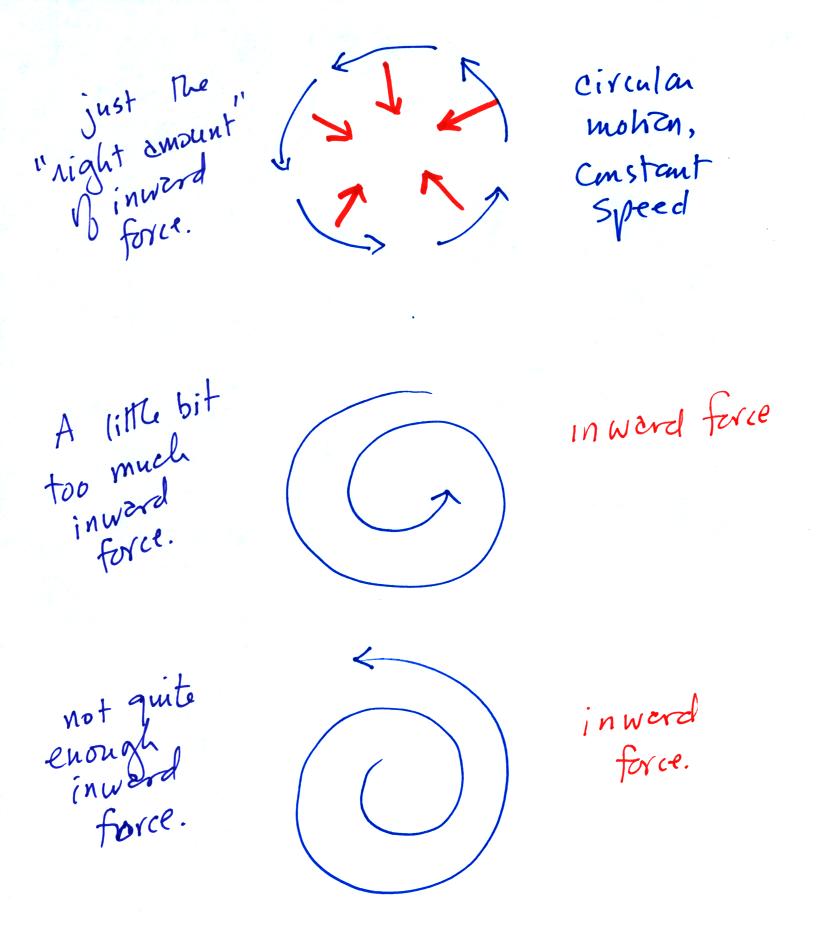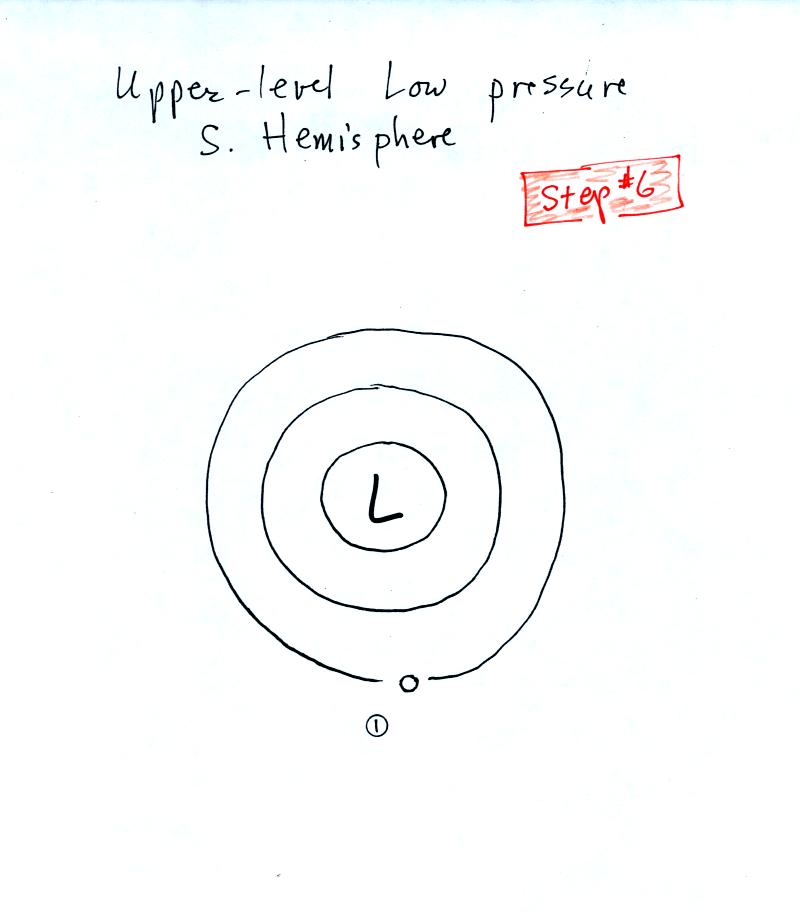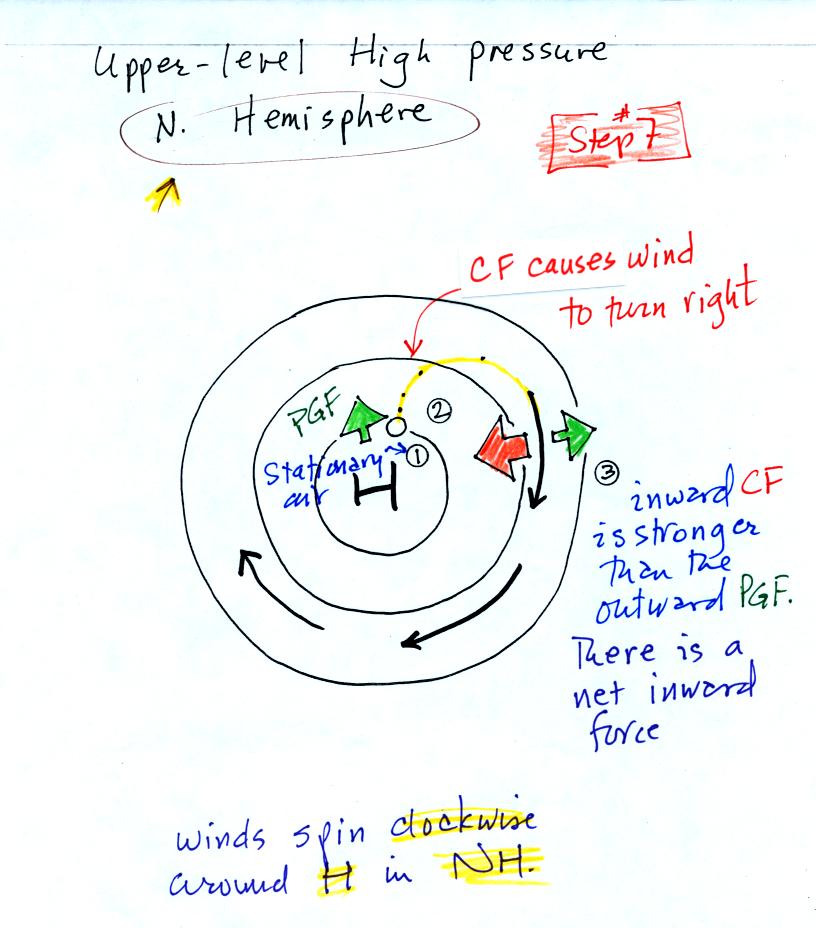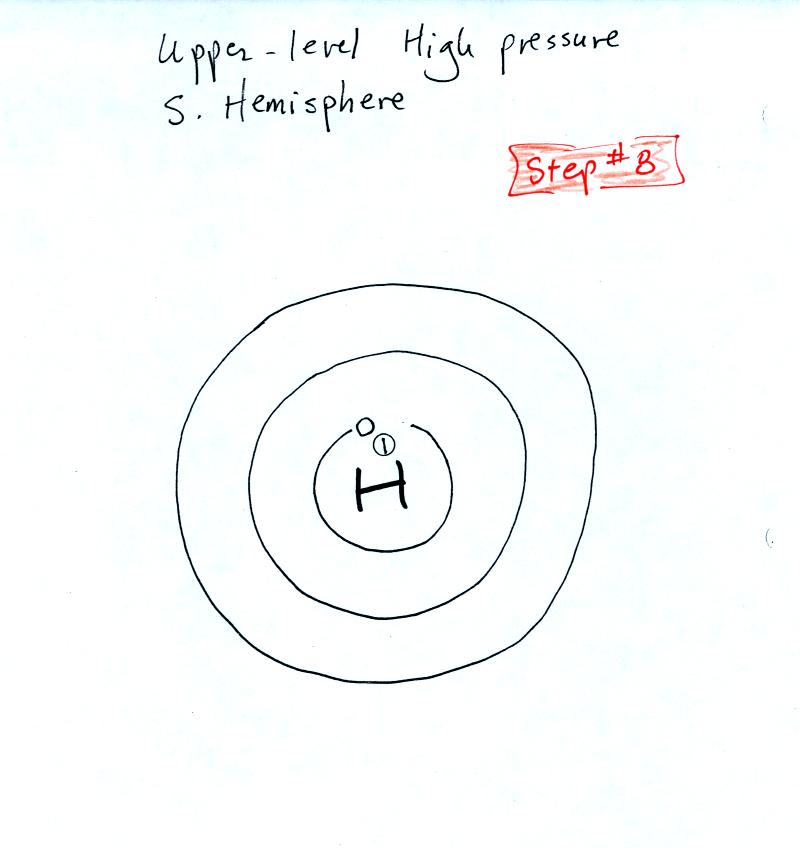
Storm systems in the tropics (0 to
30 degrees latitude) generally move
from east to west. At
middle latitudes (30 to 60 degrees), storms move in the other
direction,
from west to
east. To understand why this is true we need to learn something
about the earth's global scale pressure and wind patterns. This
is a topic we will be getting into next week.
I've borrowed the more carefully
drawn figures below from the
Spring 2009
online notes. Steps 1-8 below were on a 4 page handout
distributed in
class.

Upper level winds spinning around
high and low pressure in the
northern and southern hemispheres are shown in the first set of four
pictures. The first thing to notice is that upper level winds
blow parallel to the contours. We will see that 2 forces, the
pressure gradient force (PGF) and the Coriolis force (CF), cause the
winds to blow this way. Eventually you will be able to
draw the directions of the forces for each of the four upper level
winds examples. Here is an
example
of what you will be able to do.
The four drawings at the bottom of the page show surface winds blowing around high and low pressure in the southern hemisphere. These winds blow across the contour lines slightly, always toward low pressure. The frictional force is what causes this to occur. He is an example of what you will be able to say about surface winds blowing around low pressure in the southern hemisphere.
The four drawings at the bottom of the page show surface winds blowing around high and low pressure in the southern hemisphere. These winds blow across the contour lines slightly, always toward low pressure. The frictional force is what causes this to occur. He is an example of what you will be able to say about surface winds blowing around low pressure in the southern hemisphere.

The main point to take from Step #2
is that a net inward force is
needed anytime an object is moving in a circular path. It doesn't
matter what direction the object is moving. The net force is
inward anytime something moves in a circular path.
Quite a few people would say there is an outward force being exerted in the bottom picture, but the force is inward in each of the cases below.
Quite a few people would say there is an outward force being exerted in the bottom picture, but the force is inward in each of the cases below.

It's just not the same amount of
inward force. The amount of
force is just right in the top figure, a little "too strong" in the
middle figure, and "not quite strong enough" in the bottom figure.
Now we'll start to look at the forces that cause the wind to blow.

The pressure gradient force always
points toward low pressure.
The PGF will cause stationary air to begin to move (it will always move
toward low
pressure).

The Coriolis force is caused by the
rotation of the earth and points
perpendicular to the wind. It can only
change the wind's direction, it can't cause the wind to speed up or
slow down. The direction of the CF depends on whether you're in
the northern or southern hemisphere. We'll look at the cause of
the Coriolis force in class on Monday.

Now we start to put everything
together. The PGF at Point 1
starts stationary air moving toward the center of low pressure (just
like a rock would start to roll downhill).
Once the air starts to move, the CF causes it to turn to the right
(because this is a northern hemisphere chart). The wind
eventually ends up blowing parallel to the contour lines and spinning
in a
counterclockwise direction. Note that the inward PGF is stronger
than the outward CF. This results in a net inward force,
something that is needed anytime wind blows in a circular path.

See if you can figure out what to
do with this figure. When you
think you have the answer click here.

With high pressure the air starts
moving outward. In this
example
the wind takes a right turn and ends up blowing in a clockwise
direction around the high. Note there is a net inward force here
just as there was with the two previous examples involving low pressure.

Try this one on your own.
When you think you have the
answer, click here.
This is as far as we got in class on Friday. We'll look at surface winds next Monday.
This is as far as we got in class on Friday. We'll look at surface winds next Monday.